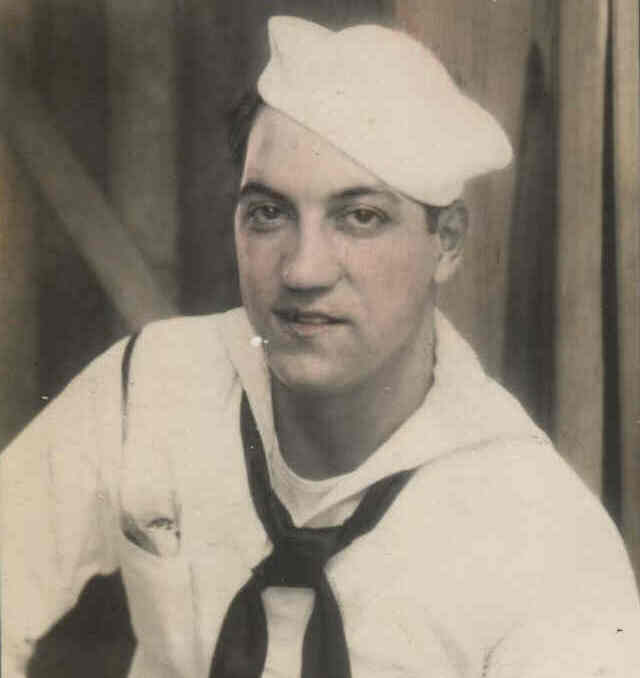
This article tells of Joe Mancini’s service and death aboard the USS Intrepid during World War II.
As a young man in the Bradley Garden’s section of Bridgewater, Joe drove a beer truck making deliveries to the local establishments. In December of 1943, he was called to service by Uncle Sam for a more important job – serving in the U.S. Navy.

He would serve on the USS Intrepid - a ship that would see a lot of action in the Pacific. The USS Intrepid would eventually become one of the most famous ships in U.S. military history.
click to read their full story

These planes could take-off from the ship and fly hundreds of miles to attack the enemy and then return to land back aboard.
The Intrepid was an amazing floating airport – right in the middle of the ocean. These aircraft carriers were the new superior weapon at sea as they outclassed the once powerful, now outdated, battleships. A single small plane (or two) from an aircraft carrier could disable (or even sink) a large powerful battleship.

In that situation the pilots who did return would provide any information that they had on the missing planes. Perhaps the crew was last seen ditching at sea – offering some hope for their return. But other times, the missing plane had last been sighted in a ball of flames. To aid in the possible recovery of downed flyers, there often were rescue boats, rescue submarines, and patrol planes stationed along the aircraft return path. Some missing men were picked up at sea, but many who did not return were never heard from again.
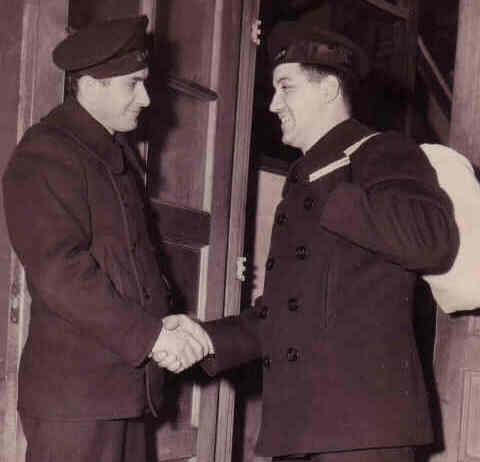
Joe Mancini’s rank/title aboard The Intrepid was “Fireman 1st Class”. His everyday job duties were repairing, maintaining, and preserving engineering and associated equipment. His special job duties in battle situations were damage control, emergency and rescue, and firefighting. Joe Mancini’s tenure aboard the Intrepid began in June of 1944. But even before Joe joined the ship, the Intrepid already had a proud battle history. In January of 1944, their planes bombed one of the Marshall Islands at Kwajalein to prepare for the U.S. invasion of that island. In February 1944, they played a major role in the bombing of the island of Truk. This was a large Japanese transportation hub in the middle of the Pacific. This island was rendered so useless by U.S. bombing, that no follow up invasion was necessary. At the very end of this mission, the Intrepid was damaged by a torpedo and had returned to Pearl Harbor for repairs.
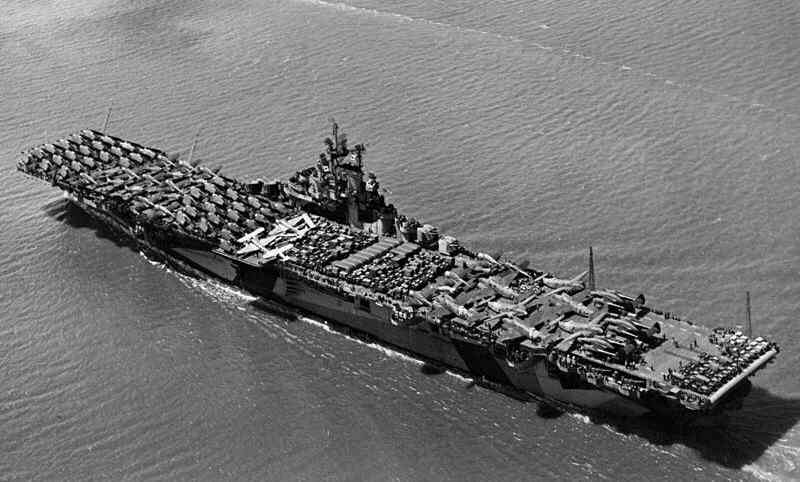
Their first assignment was a simple ferry mission – to deliver war supplies. (The missions would get more dangerous very soon.)
The flight and hanger decks were packed with planes, tanks, various equipment, and replacement soldiers to the Eniwetok atoll of the Marshall islands.
After successfully delivering their cargo, the Intrepid would return to Pearl Harbor with troops and the wounded.
packed with equipment to be delivered to the battlefront

At this meeting, the Intrepid’s next combat assignments would be set by the ever persuasive General Douglas MacArthur. Early in the war. he had, under orders, personally retreated from the Philippines leaving U.S. and Filipino soldiers to be killed or captured by the Japanese as they took over the Philippines. He was humiliated to have to accept defeat and abandon his men. Upon his leaving, he made a pledge to the people of the Philippines– “I Shall Return.” This, of course, meant return with a large army (and navy) to liberate them. Thus at this July meeting MacArthur convinced the President that the next task would be the liberation of the Philippines. In order to bring his troops ashore with as little resistance as possible, the Japanese airfields on any nearby islands would have to be knocked out of action. The Intrepid (and other aircraft carriers) would get this assignment. In August 1944 the Intrepid sailed out to do battle.
to meet with his generals MacArthur and Nimtz

After Peleliu, the planes from the Intrepid bombed the enemy airfields on various southern islands in the Philippines.
On Sept 15th the ship was sent back to Peleliu as that battle in the jungle was not going well. The Intrepid’s planes had a difficult assignment to bomb and strafe the still hidden enemy whose positions were very close to the U.S. troops.
Always active, on Sept 21st the Intrepid was back in the Philippines bombing Japanese airfields.
On Sept 23rd, the Intrepid’s planes targeted Japanese ships sinking 7 of them in a surprise attack in the Coron Bay of the Philippines. On Oct 12th , the Intrepid attacked Japanese ships at Formosa. They sunk two large warships, damaged others, and shot down 46 planes. This victory had significant costs as several planes and their crews were lost.
Set battle objectives for The Intrepid
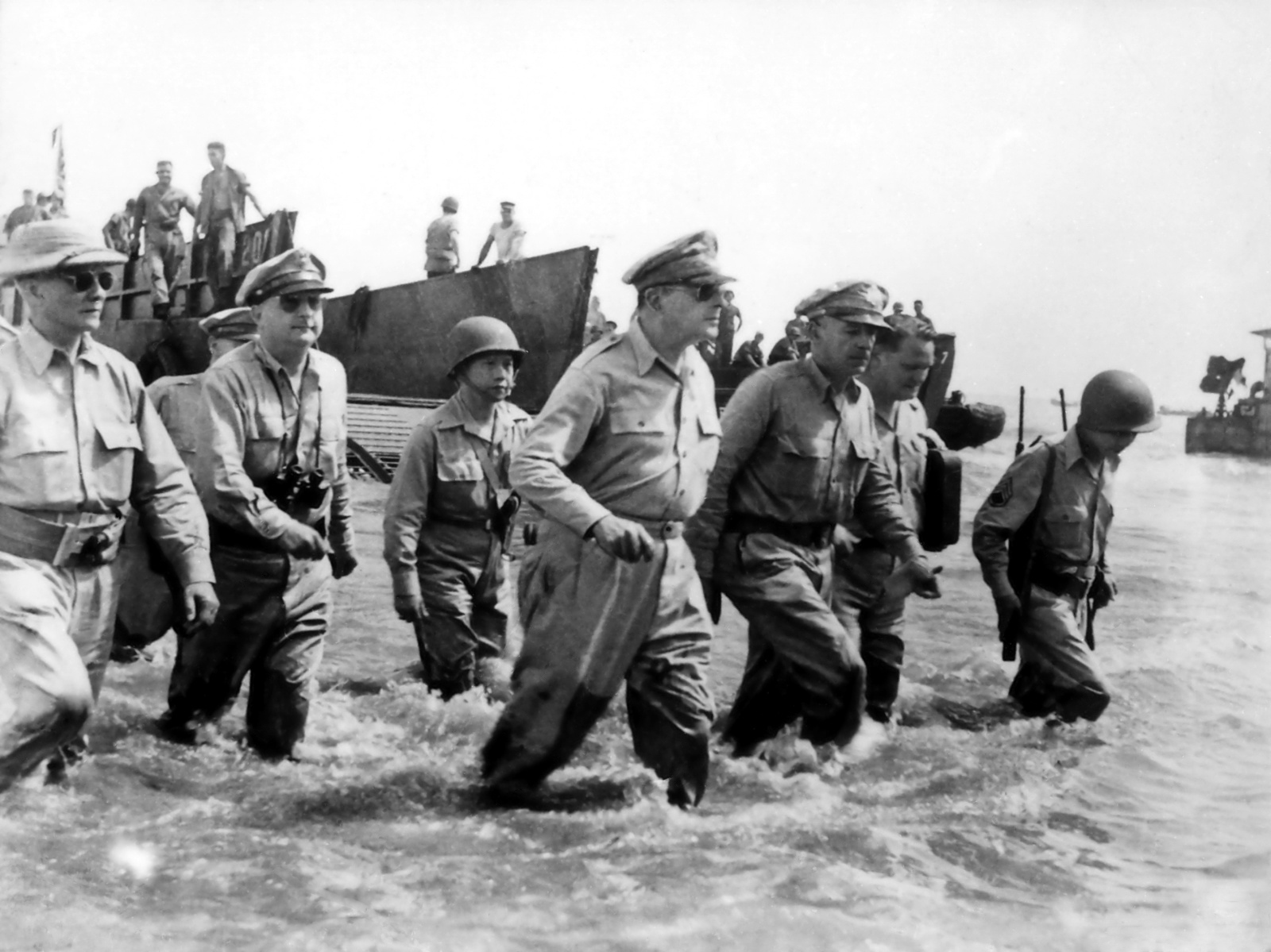
(Thanks to the Intrepid)
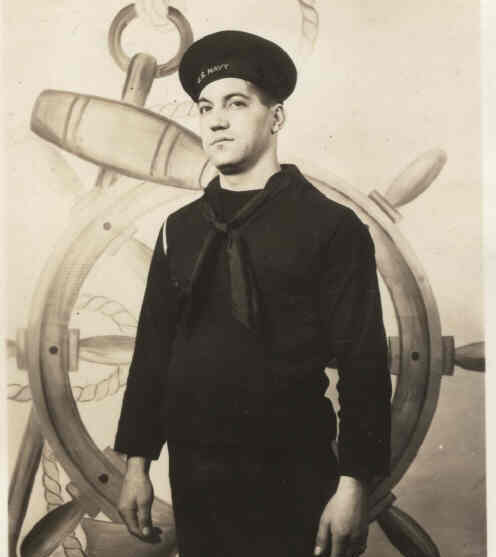
In one letter, he tells Steve who was serving in Europe, that he really should write to him.
“I never hear from you. When you get a chance drop a line just to let me know you are all O.K. Don’t have to worry about what you say, just as long as I hear from you.”
Joe even looked out for the finances at home writing:
“You don’t have to worry about the house. I made out an allotment and told Fred to pay the taxes out of it.”
Other times he wrote how he missed home:
“I got a few women back home that drop me a line. Boy they get me homesick when I hear from them. I sure do appreciate old Bradley now and I don’t mean maybe.”
One thing Joe wrote sounded so hopeful, yet it would prove to be tragic:
“There is so much to write about. But you can’t write it. After the war we will swap stories and see who can tell the most.”

Nov 25th 1944, Joe Mancini was killed when two kamikaze planes hit the Intrepid. Through the well documented sequence of events in the battle, his known job duties, and the fate of others in a similar position to him, the way he died can be determined with a great deal of certainty.
That day the Intrepid’s planes were bombing Japanese ships that were transporting troops from one Philippine Island to another so that they could join in the fight against General MacArthur’s troops. The Intrepid planes (along with others) succeeded in sinking four large Japanese ships.
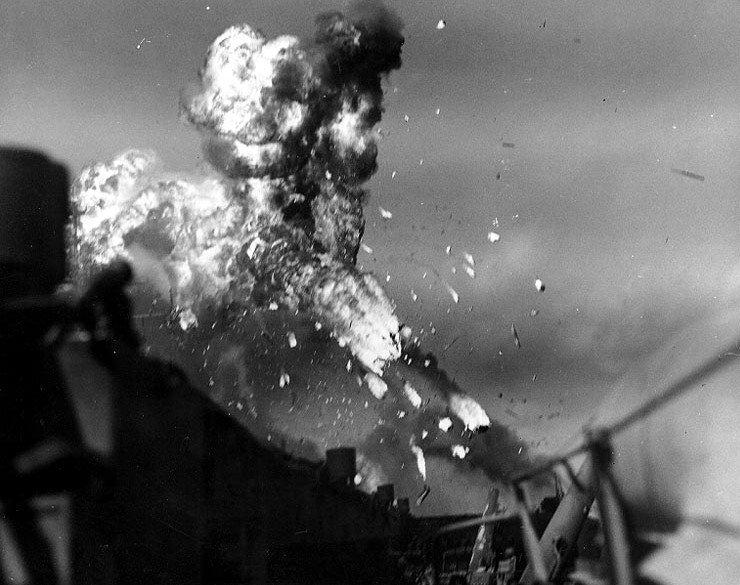
As the kamikaze neared the Intrepid, the anti-aircraft guns opened fire. A tremendous salvo of fire was unleashed at the kamikaze, but the plane flown by Japanese pilot Suehiro Ikeda avoided being hit and crashed into and through the flight deck. The resulting explosion killed 30 men in a room just beneath the flight deck and it caused a fire to erupt on the flight deck.
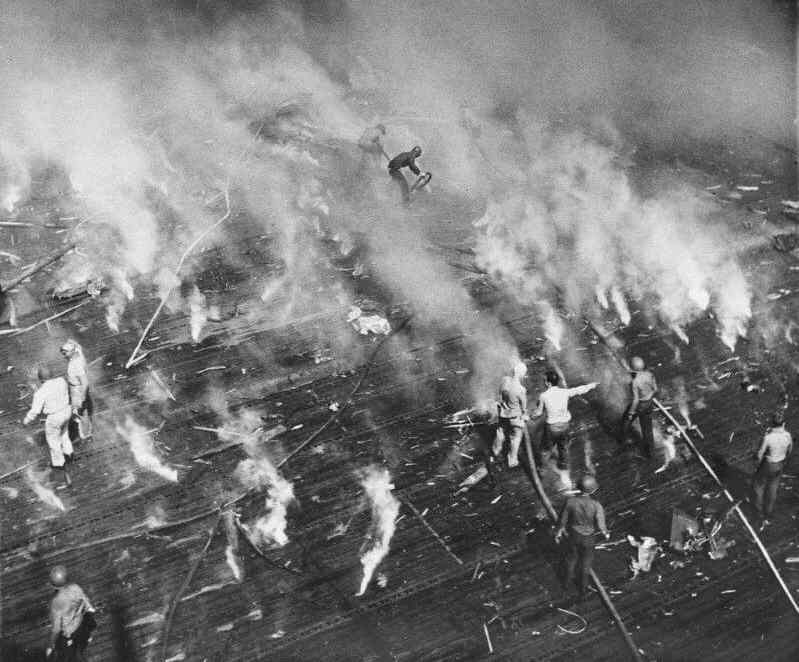
The firefighting crew was getting the fire under control when a second kamikaze, this one piloted by Kochichi Nunoda, crashed into the flight deck. The plane’s 500 pound bomb went through the flight deck and exploded inside the ship and the plane burst in a ball of fire and veered across the crowded flight deck where dozens of men were fighting the fire. Many sailors were knocked or forced overboard by the fire. Joe Mancini was most definitely one of them as he and others on the damage control team were “missing” after the much later “roll call” and identifying of the dead bodies.
The Mancini family back in Bridgewater would get the dreaded telegram “Regret to inform you …”.
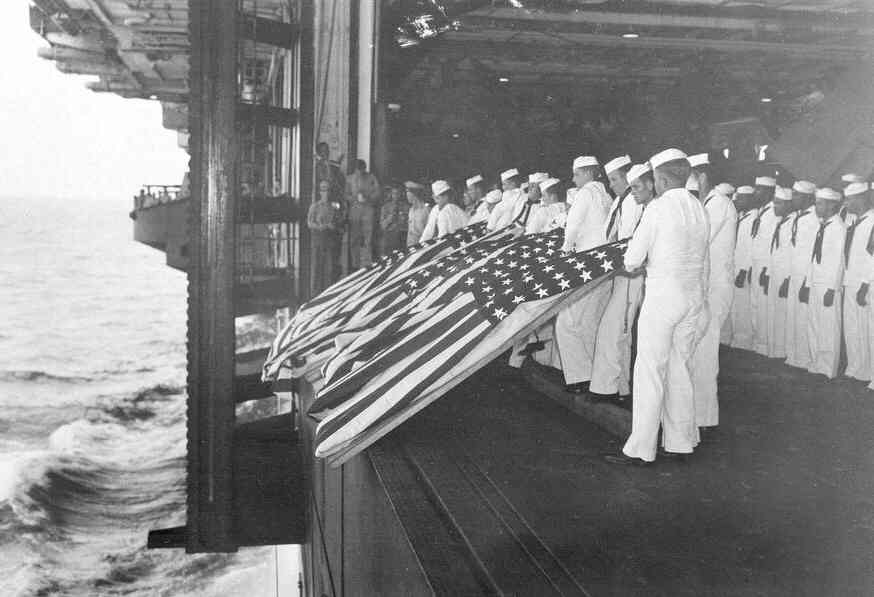
The Intrepid, while damaged so that it could no longer launch or receive aircraft, still had its engines operating and it would return once again for repairs. The Intrepid throughout her history would come back again and again.
when the 2 kamikazes hit the ship
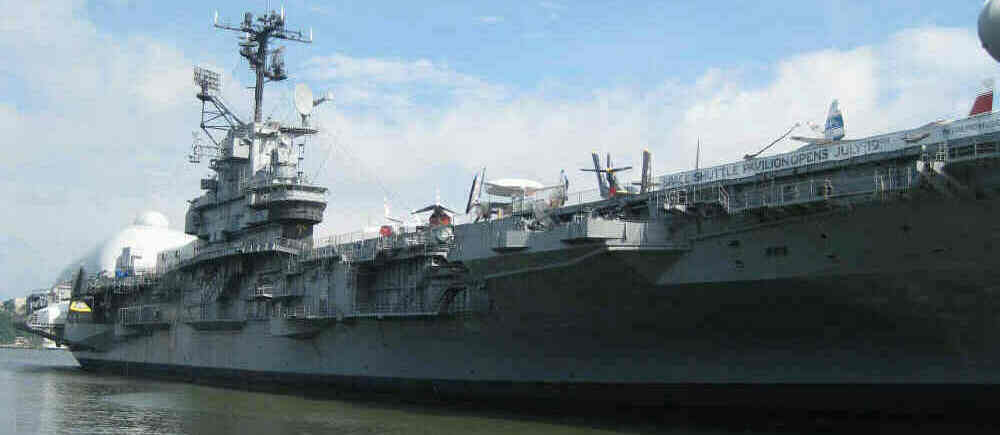
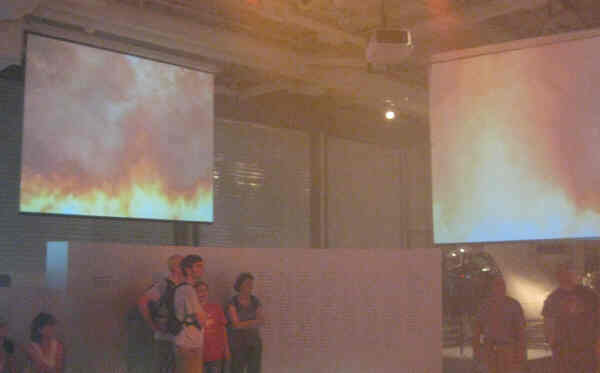
“The Kamikaze Experience - Day of Darkness, Day of Light” –
a ten minute multi-media display that shows what happened on board on November 25th, 1944, the day the two kamikazes hit the Intrepid killing 69 men including Joe Mancini.
It is a must see for every visitor. At the end of the exhibit the names of those killed in that attack are read and lit up on a commemorative wall.
It is a bit ironic that Joe Mancini’s name is highlighted in tribute every hour aboard The USS Intrepid in New York City, but there is no tribute to him in Bridgewater as there is no plaque in town listing those who died serving our country. This author’s hope is that perhaps a plaque commemorating all those killed in war will one day be displayed in Bridgewater.
from the Multi-media Display